By Amanze Akpuda, Vanguard
In his book, Cyprian Ekwensi, Ernest Emenyonu captures aspects of Ekwensi’s disposition to film in the 1950s. For instance, beyond revealing how Ekwensi “wrote and broadcast plays and stories for the BBC Overseas Service” , Emenyonu demonstrates how “once in 1954 his voice was ‘dubbed’ on to the sound track of the film Man of Africa, which was shown at the Venice Film Festival that year” .
Furthermore, Emenyonu also observes that before appearing as a University Professor in a film meant to celebrate Ghana’s political independence in 1957, Ekwensi had functioned in an important way in presenting a film commemorating Queen Elizabeth 11’s visit to Nigeria in 1956. According to Emenyonu, Ekwensi performed the role of one of the commentators when the film Nigeria Greets the Queen was produced.
That Ekwensi wrote a memorable film script called Bend a Little in the same 1950s is a good indication that he must have been a film addict having seen enough films to be able to develop interest in giving back to the cinema world what he derived from same.
The remarkable acknowledgement in West African Review of June 1955 of Ekwensi’s great contribution to the film industry as a script writer must be properly contextualized to affirm that it must be a man from a culture that cherishes films who would go the extra mile of involving himself in script writing, acting and part production.
The 1960s decade is also another era that shows that Ekwensi was like some of his peers, a highly sensitive moviegoer. It is in this period that Ekwensi reveals through interviews he granted Lewis Nkosi and Dennis Duerden that he was a remarkable film connoisseur. Both interviews show what the author of Jagua Nana has in common with the film world and part of what qualifies the need to have it filmed in the 1960s.
In an earlier study, I had cause to state that Cyprian Ekwensi’s knowledge of tendencies in film cultures was comparable to Wole Soyinka’s. My argument then as now is that as with Wole Soyinka who in a 1963 essay also talks knowledgeably about Japanese cinema, Cyprian Ekwensi also showed a high level of acquaintance in an interview with Dennis Duerden, comparing what he tries to do in his novel, Jagua Nana to details from the Japanese feature film, Rashomon, His is the disposition of a man who has been to the movie world and invariably sought to domesticate perspective drawn from such a world in some of his novels (“Ekwensi”).
No doubt, the November, 1964, interview Ekwensi had with Dennis Duerden is one which shows Ekwensi’s predisposition to cinema and at the same time theatre. While emphasizing to what extent it can be said that “the duty of any fiction writer is to seek truth” or that “truth can be seen in many facets”, Ekwensi makes the following provocative analogy:
I don’t know if you remember the Japanese film ‘Rashomon’, in which a woman tells a story that she was raped in the middle of a forest Now this is the simple story of ‘Rashomon’ and then we begin to see this incident through various eyes-the man himself, who is a soldier who is accused of this-the woman herself and so on. It is the duty of the novelist like a surgeon to keep dissecting until he gets to this cancer, to the truth, to where truth is embedded.
In other words, Ekwensi was the type of novelist who apart from being addicted to the film world would also wish to translate the multiple points of view with which film narratives are often constructed into the world of the novel. His familiarity with Japanese cinema would demonstrate his level of versatility and leisure preferences.
However, It is in the earlier August, 1962, interview with Lewis Nkosi that Cyprian Ekwensi also proves the axiom that like his mentor, Nnamdi Azikiwe, that his knowledge of happenings in national cinemas in Europe and the Americas must have been a follow-up of a tradition of longstanding film viewership. While responding to Nkosi’s question about the filming of Jagua Nana, Cyprian Ekwensi volunteers as follows:
the work is to be filmed in the dry season, that is end of October, beginning of November. And the company is called Delphia. It’s a new company, but all the members are old and famous filmmakers. The producer is going to be Alberto Latuada who’s well known internationally. And Italy, as you know is an up-and-coming center for filmmaking, almost stealing the Oscar from Hollywood.
Granted the projection that Cyprian Ekwensi gives to Alberto Latuada as a leading Italian filmmaker, one can be convinced that he was a very knowledgeable film addict. In other words, Ekwensi’s emphasis that although the company filming his Jagua Nana may be new, “the members are old and famous filmmakers” is not a casual remark.
That Ekwensi would show such familiarity with Italian Cinema, especially in terms of its overall rating through its major producers and maybe actors and actresses, is quite revealing.
This is moreso when his assessment was meant to have taken care of Latuada’s reputation, as a filmmaker at the end of the 1950s. Comparatively, it can be argued that Latuada by the end of the 1950s had not really made the type of names film makers such as Federico Fellini, Michelangelo Antonioni and Robert Rosellini from his country or Satyajit Ray, Martin Scorcese or Cecil De Mille, the maker of Ten Commandments (1923) among others had. Nonetheless, the type of identification Ekwensi gives Latuada is a good confirmation of the fact that he was familiar with Alberto Latuada’s films and the reception they had got, hence Ekwensi’s admission that Latuada is ‘’well-known internationally”.
After all, in the period immediately after the Second World War, Alberto Latuada (also Lattuada) had become justifiably famous for such films as II Bandito (“The Bandit) in 1946 and II Mulino del Po (The Mill on the Po River) in 1948. By 1950, Alberto Lattuada had in association with his famous countryman and colleague, Federico Fellini, produced Luci del varieta (Variety Lights) (see Thompson and Bordwell 416).
At the same time, one finds in the submission that “and Italy, as you know, is an up-and-coming center for filmmaking, almost stealing the Oscar from Hollywood” evidence to confirm Ekwensi’s deep familiarity with Italian cinema.
For anyone to be following the trend in the famous Oscar Awards, which may well be the equivalent of the Nobel Prize for cinema as to make such a definitive statement way back in the early 1960s such a fellow must have been, literally speaking, a reader of films and especially national cinemas.
No doubt, long before 1954 when, according to Emenyonu, Ekwensi’s voice graced the sound track of Man of Africa shown at the 1954 Venice Film Festival, Ekwensi had displayed a strong attachment to movies and their rating at International cinema events. For instance, it is instructive to note that the Japanese film, Akira Kurosawa’s Rashomon, that he mentions in his November, 1964 interview with Dennis Duerden won the Best Foreign Film award at the Oscar Awards of 1951. In other words, Ekwensi was very early in the day, very conversant with developments at major film festivals and Award ceremonies.
Cyprian Ekwensi’s familiarity with Italian cinema and the waves it was making in the international circuit in the period before his August, 1962 interview with Lewis Nkosi can be best gauged by his knowledge of Albert Lattuada and by implication Lattuada’s collaborator, Federico Fellini.
Although Ekwensi does not emphasize the fact that Federico Fellini and Alberto Lattuada owned Capitolium Film, the outfit that produced Luci el Varieta (or Variety Lights) in 1950, there is no doubt that Ekwensi’s claim that the team to be led by Lattuada had “old and famous filmmakers” or that “the producer is going to be Alberto Latuada who’s well known internationally” must have derived from his first hand knowledge of Lattuada’s profile in the late 1940s and probably through the 1950s. In this regard, notwithstanding Fellini’s claim that “I regard the film [Variety lights] as one of mine”, he concedes that given that “it’s very hard for me to remember things … Lattuada and I formed a company with our wives, and everything was a cooperative venture, I can’t remember exactly what I directed or what he directed” .
However, while accepting responsibility for the imperfections associated with The White Sheik which Charles Thomas Samuels regards as Fellini’s “greatest” film, Fellini reasons that it was because “that was the first scene I directed myself”. Fellini confesses that “earlier Lattuada has given me technical advice”. Of course, that is as it should be. After all, long before 1950, Fellini had collaborated with Lattuada on two films.
The years include 1947, when, according to Bert Cardullo, Fellini “collaborates with director Alberto Latuada on the screenplay for If delilto di Giovanni £p/scapo”and in 1948, when Fellini “works with Latuada on the scripts of Senza pieta and // Mulino del po”. In his introduction to Federico Fellini: Interviews, Bert Cardulllo is more assertive in acknowledging Fellini’s “several assignments in the late 1940s as a co-screenwriter or assistant director for Pietro Gerrni and Alberto Lattuada” .
Granted the foregoing, one can then appreciate the background to Ekwensi’s observation that Italy was in contention with Hollywood for the Oscar Awards. Ekwensi no doubt must have been responding to the fact that the Oscar Awards for Best Foreign Film had gone to Italy twice in the 1950s and twice in the early 1960s. And somehow, Lattuada’s partner, Federico Fellini had a fair share of those Oscars. Outside the general information gleaned from Chambers Film and TV Handbook, Bert Cardullo provides more detailed information about Federico Fellini’s rating as a leading Italian filmmaker. For instance, in 1954 the same year that Ekwensi’s voice made the soundtrack of Man of Africa premiered at the Venice Film Festival, Fellini received the Silver Lion Award at the same festival.
In 1956, Fellini’s La Strada received the Oscar for the Best Foreign Film. That same year, La Strada won a New York Film Critics’ Award for Best Foreign Film. 1957 saw Fellini’s Le notti di Cabiria (The Nights of Cabiria) win an Oscar as Best Foreign Film. According to Bert Cardullo, in 1957 at the Cannes Film Festival, “Giulietta Masina is voted Best Actress … for her work in this film”.
The early 1960s is another remarkable period for Italian cinema as almost personified in the work of Federico Fellini. In this regard, Bert Cardullo reveals that apart from receiving “the Best Film Award at Cannes” in 1960, Fellini’s La doice vita also made film history in 1961 when it garnered awards for the Director. According to Cardullo, in 1961, “La Dolce Vita receives a New York Film Critics’ Award and a National Board of Review citation as Best Foreign Film. Nominated for an Academy Award for Best Director for his work on this picture”. 1963 would be another significant year for Fellini and Italian cinema as a whole. It is the year Feilini’s 81/2 also called Otto e Mezzo got released and, according to Bert Carduilo, “receives an Academy Award, a New York Film Critics’ Award, and a National Board of Review Citation as Best Foreign Film” . At the same time, 8 1/2 got Fellini a nomination “for an Academy Award as Best Director for his work on this picture”.
As the foregoing demonstrate, one can with hindsight describe Ekwensi as a highly perceptive film addict and commentator. Outside intellectuals like Wole Soyinka and Chinua Achebe this type of film knowledge is almost unrivalled in the Nigerian society of the time Ekwensi got interviewed in 1962,
The 1973 interview Cyprian Ekwensi granted Bernth Lindfors is yet another source that throws more light on Ekwensi’s multiple experience in the film industry as a fan, writer, actor, producer, editor and critic. No doubt, as with what we have said about Azikiwe, from the various responses Ekwensi gives in this interview it would be intellectually fraudulent to dismiss the Igbo man as a newcomer tc the world of Cinema spectatorship.
As a film fan, Ekwensi makes quite significant statements about his familiarity with Hollywood and Bollywood film traditions. It is in the Lindfors interview that Ekwensi robustly admits that the influence of films in his stories is derived from the fact that “I’m a great Cinema fan” (Lindfors Interviews 122). Moreover, he reveals that he is acquainted with the star system in the Hollywood of that era. Such explains why Ekwensi enthusiastically admits that “I used to know all the actors by name – people like Robert Taylor, Randolph Scott, Gary Cooper and Bill Boys” . Furthermore, he demonstrates some knowledge of the plot and general ideology of the Hollywood film. As he confesses “all those stones about Wyoming and the ranches and the trails and so on. I loved that kind of thing, just for the joy of it”. Concerning the improbability of the film ideology promoted by Hollywood, Ekwensi observes that “it’s not meant to be anything serious. Nobody takes it seriously or really believes that one cowboy holding a revolver with a range of fifty yards can kill a whole tribe of Indians. It’s not true”.
The Gary Cooper that Ekwensi acknowledges as a major actor was prominent in Hollywood of the 1940s and 1950s. Beyond appearing in Meet John Doe (1941) and High Noon (1952) among several others, Gary Cooper is isolated by Richard Maltby as one of the “top stars” in 1944 recognized alongside Bing Crosby (566). In 1953, according to Maltby, Gary Cooper is identified as “the top box office star”. Two other film critics, Lee Strasberg and Richard Dyer demonstrate why one should see Ekwensi’s recognition of Gary Cooper as very significant. For instance, “Gary Cooper, John Wayne and Spencer Tracy”, according to Lee Strasberg, are remarkable for their perfection of the Stanislavskian idea of acting whereby “they try not to act but to be themselves, to respond or react.
They refuse to do or say anything they feel not to be consonant with their own characters”. Elsewhere, in 1987, Richard Dyer, the author of Heavenly Bodies: Film Stars and Society corroborates the same testimony. In Dyer’s reasoning whoever appreciates Gary Cooper or Doris Day, “precisely what you value about them is that they are always ‘themselves’ – no matter how different their roles, they bear witness to the continuousness of their own roles”.
It is Ekwensi the playwright who had “also written radio plays, including a radio adaptation of People of the City which was broadcast by the BBC” that we also encounter as a writer of film scripts. Here, it is instructive to note that way back in 1962 when he granted an interview to Afrique, Chinua Achebe had acknowledged that Ekwensi “does articles and film scripts” . Thus Ekwensi’s profile as a writer of film scripts was almost public knowledge by 1962. Of the filmscripts he may have written, Ekwensi in his interview with Bernth Lindfors seems to remember only one humorous one entitled “Stretch a Little, Bend a Little” and the one he did for Nigeria’s Independence. After explaining the characteristically allegorical feature of the “Stretch a Little … “ filmscript, Ekwensi informs Lindfors that “the film was produced by Victor Gover around the 1960s – a short film, about ten minutes. And it was done by puppets on strings, not real wives, not breathing human beings”.
Although Ekwensi admits to Bernth Lindfors that”! have also acted in films”, it is only one that he talks about. This is the Ghana independence film, “Work in Transit” which Ekwensi notes was “produced by an Englishman named Scan Graham”. In narrating his level of involvement, Ekwensi remarks that “I played the part of a University lecturer. One of the difficult scenes was where I had to do an Ewe dance”. Knowing that Ekwensi had acted in the 1960s in a film called Omowaie as reported by Chidi Ikonne, one can then appreciate that given the forum of an interview that was not necessarily focused on his exploits as a film person, Ekwensi may have had to be as sketchy as possible.
Cyprian Ekwensi features in John A. William’s Omowaie, The Chid Returns Home a 1960s film which, according to Chidi Ikonne, numbers among those that “have made definite attempts to break away from the stereotyped ‘African’ film with its implicit or explicit racial prejudice” . Regarding the focus of Omowaie which he observes as having been “produced in Nigeria in the early sixties”, Ikonne reveals that “the picture not only dramatizes what should be the attitude of the modern black man to his past, but also explored the past and present heritage of the black man”.
Probably in his capacity as the Director of Information at the Federal Ministry of Imformation, Lagos, Cyprian Ekwensi acts as a cultural ambassador and in his interaction with John A. Williams is presented as informing him about the urgency of the need for the black man to “retain the essences of his own blackness” .
In the same 1960s, 1965 to be precise, Cyprian Ekwensi featured in another film. This is a documentary entitled In Search of Myself. According to Femi Shaka, “the film featured renowned Nigerian artistic figures such as Chinua Achebe, Onuora Nzekwu, Cyprian Ekwensi, Demas Nwoko, Simon Okeke, and Duro Ladipo”.
The production of “a film on Nigeria’s independence” is another experience that presents Cyprian Ekwensi not only as a film script writer but also an editor and producer. Concerning his job as an editor of the film in question, Ekwensi reveals to Lindfors as follows:
the Nigerian Film Unit – this was before I became Director – spent a lot of time shooting throughout the country, and they had this mass of celluloid and scenes which they didn’t know what to do with. So I sat for hours and hours and hours in London (I was flown over to London specially for this), trying to make some sense out of it.
In addressing what became of the tamed “mass of celluloid and scenes”, Ekwensi admits that “eventually I was able to produce a script and to do the narration myself”. Thus, we have from Ekwensi’s testimony another evidence of his sense of versatility as a film hand.
Perhaps what remains to complete the picture on Ekwensi’s profile as a film buff is to highlight his status as a film critic (and censor). As with his model, Nnamdi Azikiwe, Ekwensi shows a sensitivity to the offerings from Hollywood. Beyond admitting that in the pre-independence era, “there were really serious films – Humphrey Bogart and so forth, mainly American films”, Cyprian Ekwensi also reflects on his rating of Indian films.
For instance, while he has a very low regard for Indian films, he still has reservations for the excesses of Hollywood. Concerning what he considers the low quality of Indian movies, Ekwensi notes that “at Independence the film distributors suddenly discovered that they didn’t need to wrack their brains going through lists of the best films in different countries – they didn’t need to make the effort. Provided they got an Indian film full of fantasy, this was enough to earn them their money, so why work, why worry?” . In appreciating what was made of Mario Puzo’s novel, The Godfather, Ekwensi notes that today we are being treated to The Godfather in Lagos.
I’ve seen The Godfather, I’ve read the novel, and I think it’s a corrupting film. We live now in an age of violence, and I didn’t think that there should be this dramatization of the techniques of violence. There are incidents in that film (and I know the censor must have cut a lot) which are suggestive of killing, which would make one try to kill. If I were the censor, I wouldn’t have passed that film.
From the foregoing, one can appreciate that the Cyprian Ekwensi who started his entertainment career on the stage in Jos in the late 1930s and who would later become a major film addict, actor, scriptwriter, producer, editor, director and so on is like Nnamdi Azikiwe’s case another concrete illustration of the fact that the Igbo man is not hostile to the world of cinema. If the British Broadcasting Corporation would refer to Ekwensi’s film heritage way back in 1947, long before Onitsha Market Literature proclaimed such a group sensibility to the literary world, it then means that Ekwensi must have displayed this taste quite early in his life. And having grown among his kith and kin, there is no doubt that as would be shown in texts of Onitsha market Literature, Ekwensi’s disposition to cinema is representative of a group consciousness. It is within this contest that Adiele Afigbo informed me that “in the 1950s the halls were always packed full in cinema houses in Onitsha, Aba and Enugu”.
Sunday, January 17, 2010
Cyprian Ekwensi’s film heritage and Igbo film legacy(2)
Labels:
Amanze Akpuda,
Cyprien Ekwensi,
Ernest Emenyonu,
Igbo Culture,
Nd'Igbo,
Vanguard
Subscribe to:
Post Comments (Atom)

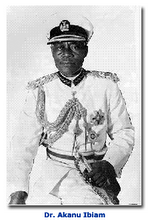
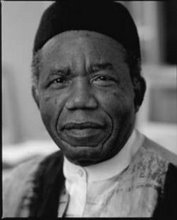
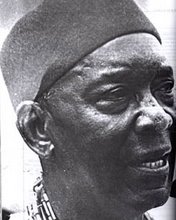
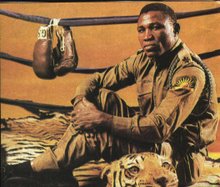
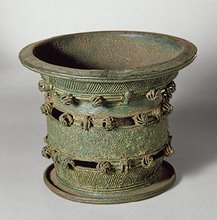
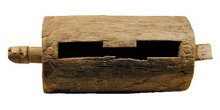
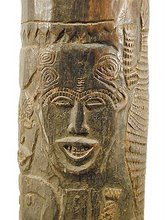
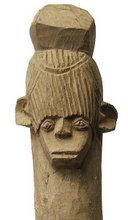
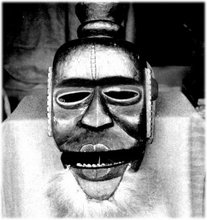

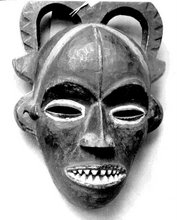
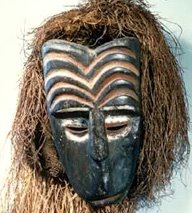
No comments:
Post a Comment